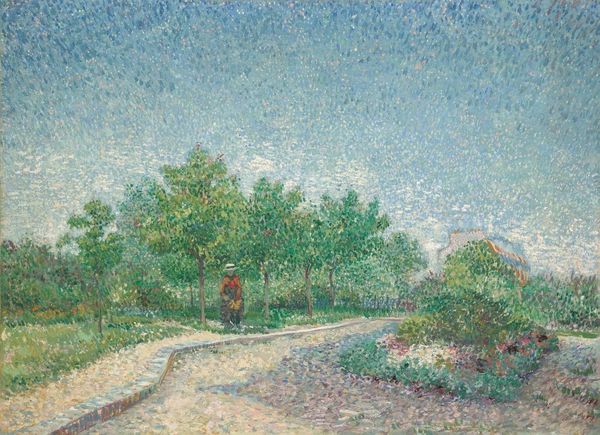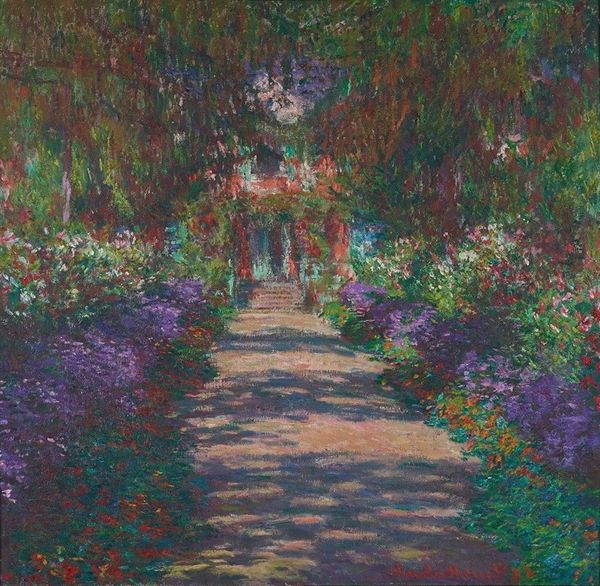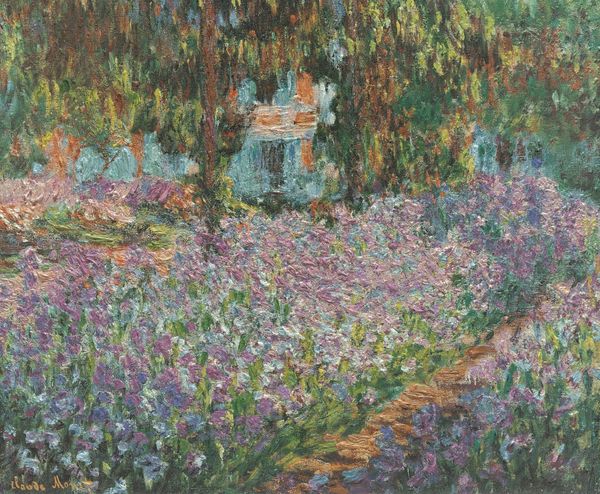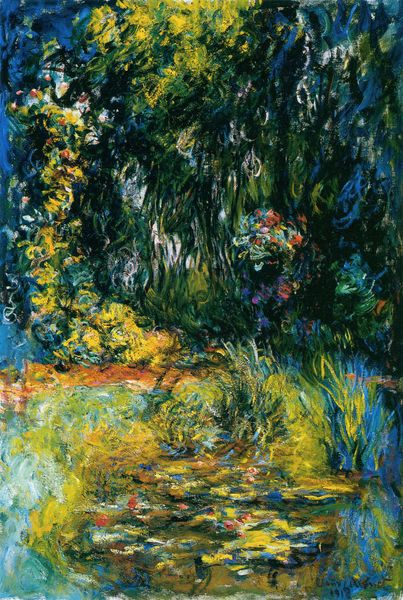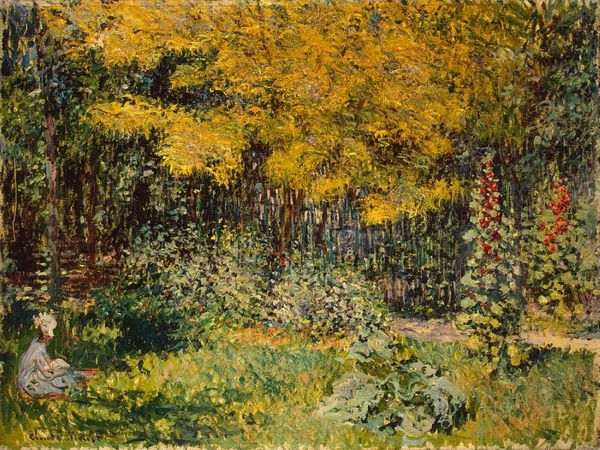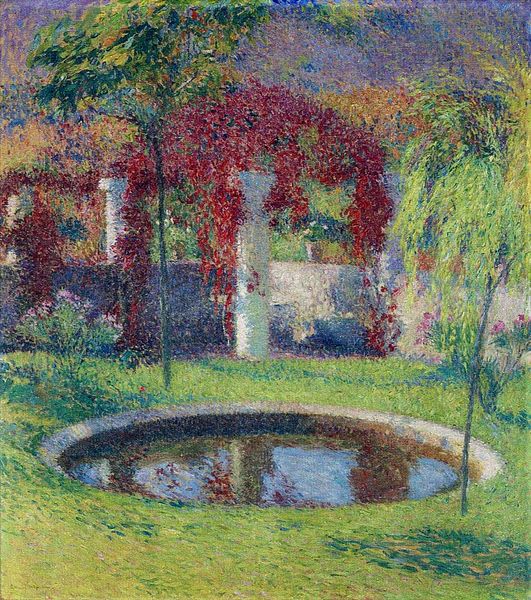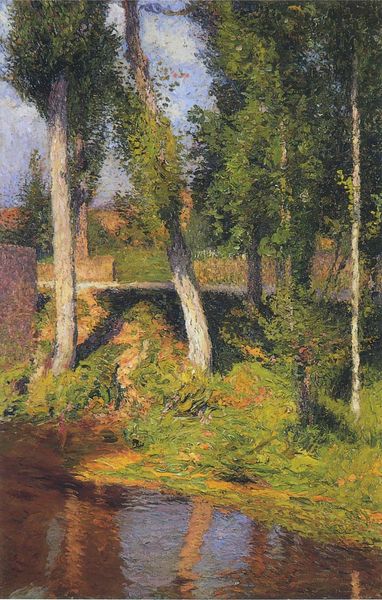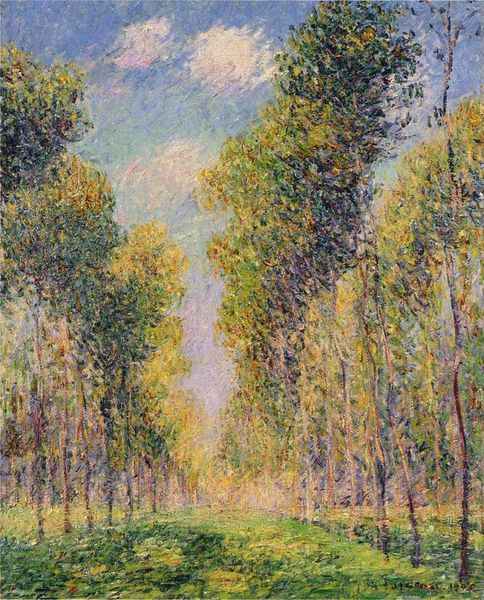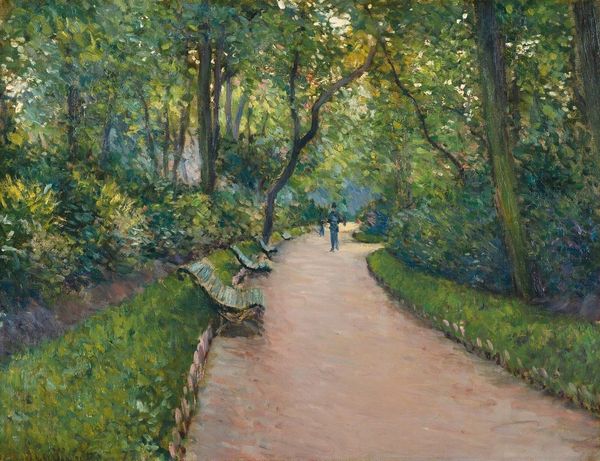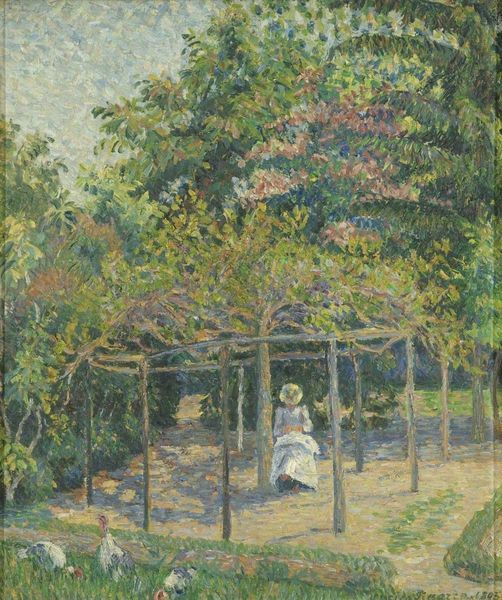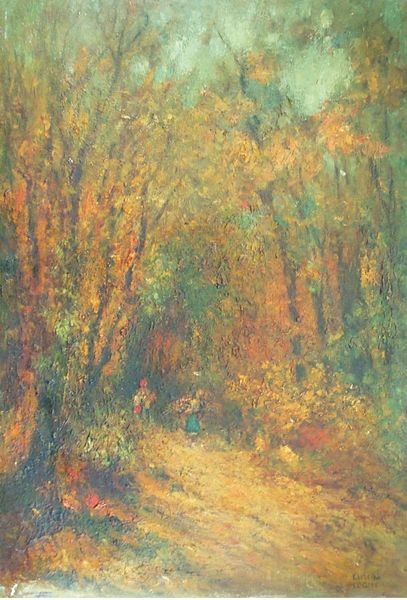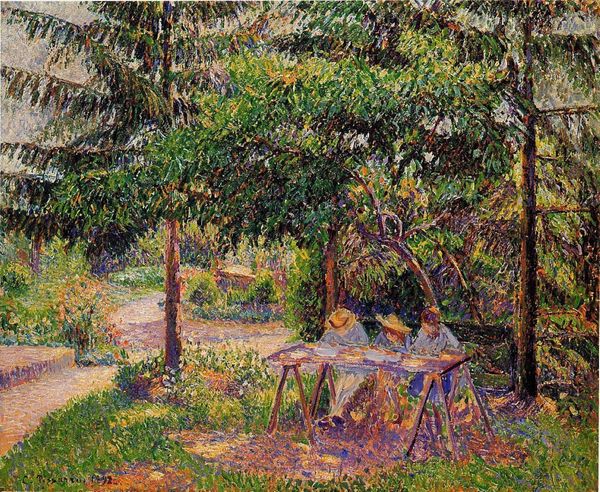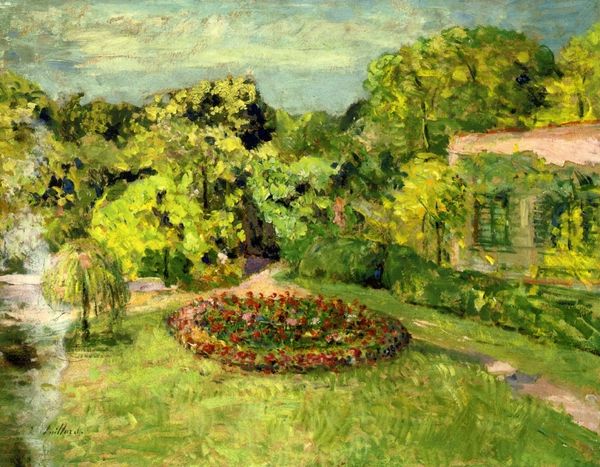
Copyright: Public domain
Curator: Today we’re observing Claude Monet's "Pathway in Monet's Garden at Giverny," painted in 1900. Editor: It strikes me immediately as a very personal scene. There's this immediate compression with that heavy canopy and tunnel of light inviting us inward. It is masterfully balanced with the light patches. Curator: Monet's garden, indeed his entire property at Giverny, became an important source of inspiration. It was more than just a setting, wasn’t it? Monet actively constructed it. The garden became his ultimate art project. This work exemplifies the artist’s almost singular focus on nature during the later years of his career, reflecting a wider cultural interest in naturalism at the turn of the century. Editor: Absolutely, and that construction informs the composition here. The path, bisecting the painting, establishes a clear linear perspective, leading our gaze towards the house barely visible at the end. Notice how he uses broken brushstrokes of color, blues and yellows, capturing the shimmering effect of light filtered through leaves, almost obscuring, then revealing, that goal that the very end of the pathway is drawing you towards. It's a clever use of contrast, the shadows against that illuminated path. Curator: Giverny was a carefully manicured space, reflecting Monet’s artistic control even outside the studio. It also was open to visitors. He carefully fashioned and mediated what would be seen. It reflects the rise of bourgeois leisure culture and the romantic ideal of the artist immersed in nature. Editor: It becomes clear that he's less concerned with botanical accuracy than with capturing the overall visual sensation, doesn't it? He wants to portray his subjective experience, of that carefully sculpted experience of course, of walking through that space, not a literal representation of it. It’s about the sensory input of light, shadow, and the interplay of colors. Curator: Well put. I’m struck by how "Pathway" represents not just Monet’s individual vision but also a pivotal moment where artists begin to take on nature as active participants, actively intervening. Editor: Looking closely at how Monet deploys the medium, that visceral application of thick oils that creates a palpable sense of texture, gives me a sense of not just place, but the emotional truth, the emotion of standing there, a wonderful testament to the sensory, and deeply, emotionally rich qualities of Monet’s painterly technique.
Comments
No comments
Be the first to comment and join the conversation on the ultimate creative platform.
